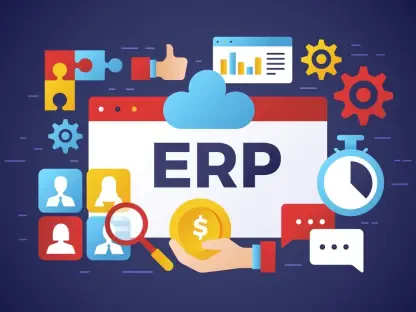Imagine a cloud computing landscape where over 55 million compute cores hum in unison across the globe, powering everything from telecom giants to cutting-edge AI workloads, while beneath this impressive scale lies a persistent challenge: technical debt that threatens to slow innovation and scalability. Enter OpenStack Flamingo, the 32nd major release of this pioneering open-source Infrastructure as a Service (IaaS) platform. This roundup dives into diverse perspectives from industry experts, community contributors, and enterprise users to unpack how Flamingo addresses legacy issues, boosts performance, and shapes the future of cloud infrastructure. The aim is to distill varied opinions and practical insights on this milestone update, offering a comprehensive look at its impact and relevance for organizations worldwide.
Exploring Flamingo’s Role in OpenStack’s Evolution
OpenStack has long been a cornerstone of open-source cloud computing, evolving since its inception to meet the demands of a rapidly changing tech environment. Community leaders often emphasize that Flamingo represents a critical turning point, tackling deep-rooted technical debt while introducing enhancements for modern needs. Many highlight the collaborative spirit behind this release, noting contributions from hundreds of individuals across major organizations as a testament to the platform’s enduring strength and adaptability in a competitive market.
Industry observers point out that Flamingo isn’t just another update but a strategic response to long-standing operational challenges. Discussions within tech forums suggest that its focus on modernization aligns with broader trends in cloud computing, where agility and efficiency are paramount. This release is seen as a bridge between OpenStack’s historical roots and its ambition to remain relevant for emerging domains like edge computing and high-performance workloads.
A recurring theme among contributors is the balance Flamingo strikes between innovation and stability. While some users appreciate the rapid pace of advancements, others stress the importance of ensuring that such updates don’t disrupt existing deployments. This diversity of opinion sets the stage for a deeper exploration of specific features and their real-world implications, reflecting a community committed to both progress and pragmatism.
Key Features and Innovations in Flamingo
Tackling Legacy Code with Eventlet Migration
One of the most discussed aspects of Flamingo is the migration away from the outdated Eventlet library to modern Python async frameworks. Developers active in the OpenStack community describe this shift as a monumental step toward reducing technical debt, noting that modules like Barbican and Heat have already completed the transition. The consensus is that shedding this legacy code enhances scalability and reliability, addressing pain points that have lingered for years.
However, opinions differ on the pace and scope of this migration. Some contributors caution that core components like Nova and Neutron still face hurdles, advocating for a measured approach to avoid stability risks. Others argue that accelerating the transition is essential to keep OpenStack competitive, even if it means short-term disruptions for certain users. This debate underscores a broader tension between modernization and operational continuity.
Enterprise adopters weigh in with practical concerns, emphasizing the need for clear documentation and support during such transitions. Many suggest that while the long-term benefits of reduced technical debt are undeniable, organizations must carefully plan upgrades to mitigate potential downtime. This spectrum of views highlights the complexity of overhauling foundational code in a widely used platform.
Enhancing Modern Workloads with Enterprise Features
Flamingo’s targeted upgrades for modern workloads also spark varied reactions. Features like Nova’s support for AMD SEV-ES secure enclaves and Magnum’s Kubernetes credential rotation are praised by security experts for addressing critical needs in AI, machine learning, and high-performance computing. Representatives from industries like telecom note that these enhancements provide a competitive edge, especially for hyperscale cloud providers handling sensitive data.
Yet, there’s a split in how quickly organizations should adopt these cutting-edge capabilities. Some IT managers argue that early adoption offers strategic advantages, particularly in regulated sectors where security is non-negotiable. Conversely, others express reservations about integrating untested features into mission-critical systems, preferring to wait for broader validation from the community or case studies demonstrating proven impact.
Real-world feedback adds another layer to this conversation. Users from sectors like telecommunications share that Flamingo’s focus on privacy and performance aligns well with their infrastructure demands, but they also call for more robust training resources to maximize these tools. This mix of enthusiasm and caution paints a nuanced picture of how Flamingo’s enterprise-grade features are perceived across different contexts.
Redefining Upgrades with the SLURP Schedule
The introduction of the non-Skip Level Upgrade Release Process (SLURP) in Flamingo garners significant attention for its attempt to balance rapid innovation with operational stability. Community discussions reveal strong support for this model, which allows users to choose between frequent six-month cycles or a slower, yearly cadence tied to SLURP releases. Many see this as a thoughtful solution catering to diverse operational needs, from fast-moving tech firms to risk-averse enterprises.
Differing perspectives emerge on whether SLURP fully resolves long-standing tensions around release frequency. Some stakeholders believe it offers a much-needed middle ground, ensuring that stability-focused users aren’t left behind while innovators can access the latest features. Others question if the dual-track approach might fragment the user base, creating confusion or uneven support for non-SLURP releases over time.
Looking ahead, anticipation builds around the next SLURP release, codenamed Gazpacho, expected in the coming year. Users and analysts alike suggest that its success will hinge on how well the community communicates upgrade paths and addresses feedback from initial SLURP adopters. This ongoing dialogue reflects a collective desire to refine the release process for maximum inclusivity and effectiveness.
Positioning Within the Open-Source Ecosystem
Flamingo’s role extends beyond technical updates, sparking conversations about OpenStack’s place in the larger open-source ecosystem. Many in the community highlight its alignment with the OpenInfra Foundation’s mission and connections to projects like Kata Containers, as well as recent unifications with broader initiatives under the Linux Foundation. This strategic positioning is often viewed as a way to amplify resources and innovation through collaboration.
Comparisons to proprietary cloud giants like AWS surface frequently, with some experts arguing that OpenStack’s open, collaborative model offers unique advantages in flexibility and cost. Others counter that competing with such giants requires more aggressive marketing and accessibility to attract smaller enterprises hesitant about open-source adoption. This contrast in viewpoints underscores the challenges and opportunities of maintaining relevance in a crowded market.
A fresh perspective comes from ecosystem partners who see Flamingo as a signal of OpenStack’s long-term viability. They emphasize that strategic alignments and community-driven development position the platform to tackle future demands beyond traditional cloud use cases. This optimism is tempered by calls for clearer roadmaps to ensure that such partnerships translate into tangible benefits for end users.
Practical Takeaways from Flamingo’s Impact
Drawing from the wealth of opinions, several actionable insights emerge for organizations considering Flamingo. Community contributors stress the importance of assessing upgrade cadences based on specific operational goals, whether prioritizing speed for innovation or stability for critical systems. This tailored approach helps mitigate risks while capitalizing on new capabilities.
Security-focused enhancements also receive strong endorsements, with many suggesting that organizations handling sensitive data prioritize features like secure enclaves and credential rotation. IT teams are encouraged to test these in controlled environments first, leveraging community forums for best practices and troubleshooting advice. Such steps can ease the integration of advanced tools into existing workflows.
For cloud administrators and developers, hands-on guidance centers on exploring Flamingo’s potential in hybrid or private cloud setups. Feedback from early adopters indicates that experimenting with migrated modules and updated features in pilot projects can reveal performance gains and pinpoint areas needing customization. This practical focus ensures that Flamingo’s benefits are not just theoretical but directly applicable to real-world scenarios.
Reflecting on Flamingo’s Contributions and Next Steps
Looking back, the discussions around OpenStack Flamingo reveal a dynamic blend of optimism, caution, and strategic thinking among community members, enterprise users, and industry observers. The consensus points to Flamingo’s success in slashing technical debt, enhancing performance for modern workloads, and offering flexible upgrade paths through innovative scheduling. Diverse perspectives enrich the conversation, highlighting both the platform’s strengths and the challenges of balancing rapid progress with operational reliability.
As a next step, organizations are advised to dive deeper into community resources and collaborate with peers to tailor Flamingo’s features to their unique environments. Exploring pilot deployments and engaging with upcoming releases like Gazpacho could uncover further opportunities for optimization. Beyond individual adoption, fostering dialogue on how open-source collaboration can address evolving cloud demands emerges as a vital consideration, ensuring that Flamingo’s momentum continues to drive meaningful advancements in infrastructure technology.









